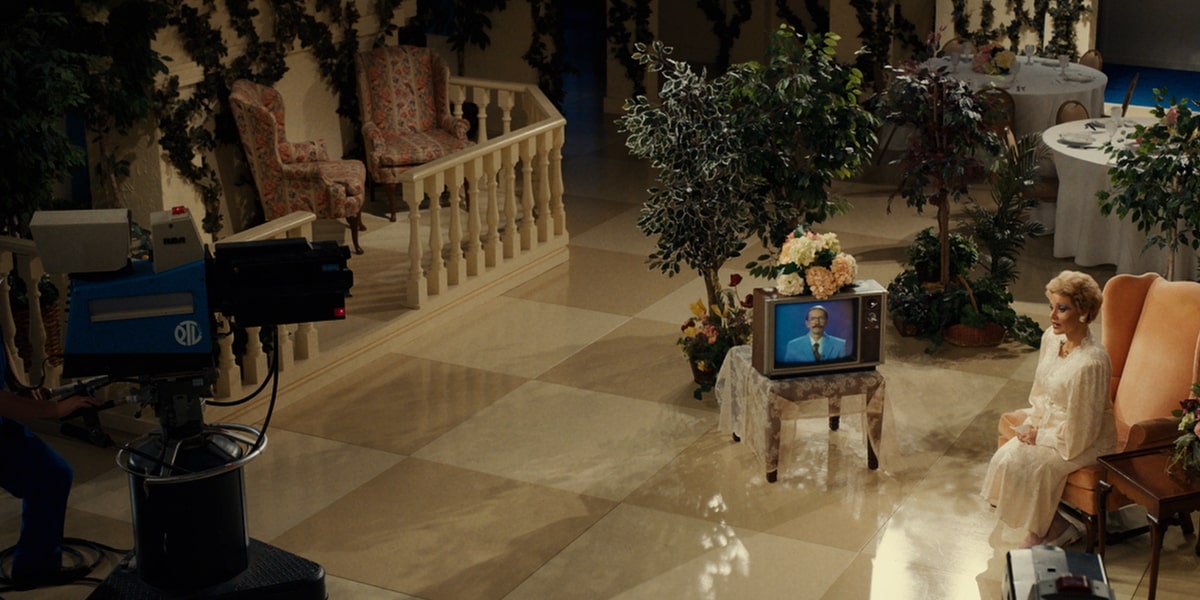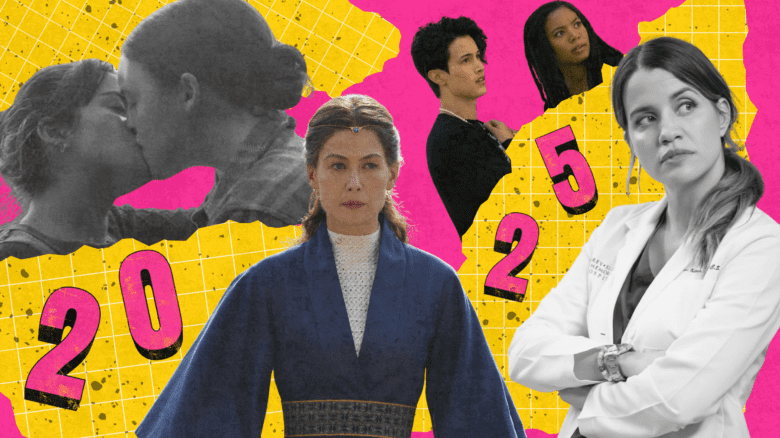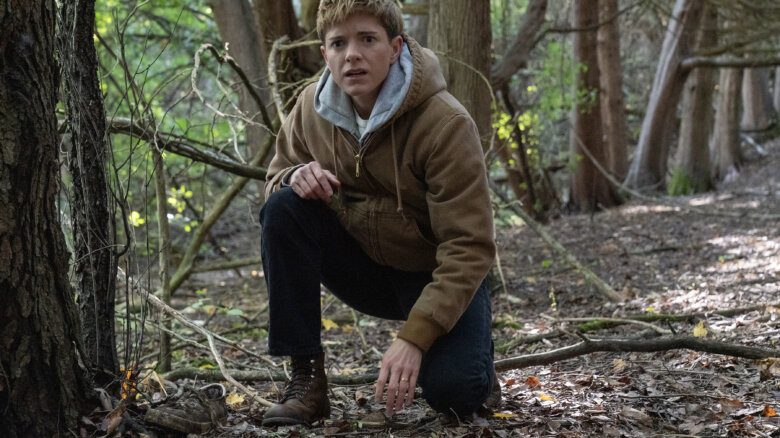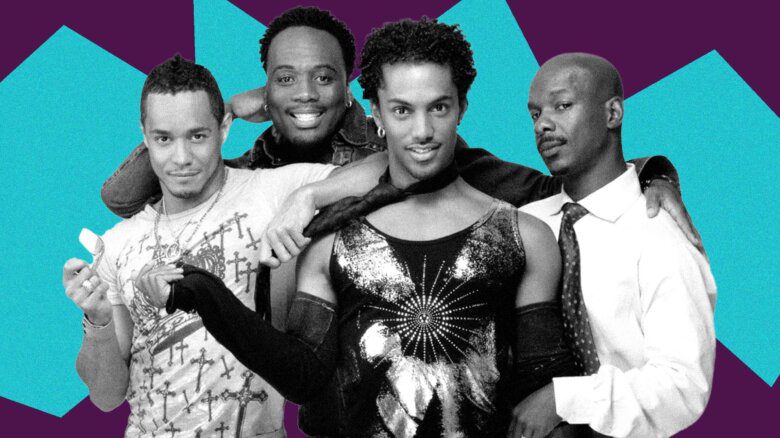In 2000, Fenton Bailey and Randy Barbato set out to rehabilitate the image of Tammy Faye Messner, the disgraced televangelist and ex-wife of Christian con man Jim Bakker, who served a five-year prison sentence for fraud and conspiracy related to the couple’s multi-million dollar PTL (Praise the Lord) Club ministry in the 1990s. On paper, it was an unlikely collaboration: Bailey and Barbato were arty, gay, New York club kids who founded World of Wonder, the production company that would go on to create the RuPaul’s Drag Race franchise. Tammy Faye was the Bible school drop-out with spider-leg mascara, cantilevered shoulder pads and a calling from Jesus to spread his word.
It turned out, however, to be a match made in heaven.
Bailey and Barbato’s entertaining documentary, The Eyes of Tammy Faye, was a deeply empathetic tribute to a flamboyant and tragic woman—queer catnip, in other words. And it sanctified Tammy Faye as a gay icon: RuPaul, who had befriended her after her fall from grace, narrated her story alongside a chorus of puppets (a reference to an early Christian children’s show hosted by the Bakkers). Despite helping to build one of the richest and most corrupt evangelical ministries in the United States, the doc portrayed Tammy Faye as a wronged woman with a kind heart and a can-do spirit—a friend to gay men and people with AIDS during one of the most virulently homophobic periods in modern history.
It was a redemption not by Christ but by camp: Tammy Faye with her waterworks-tears, Betty Boop voice, acrylic nails and self-deprecating humour seemed just too delicious to be all bad.
The fizzy, glitzy new biopic The Eyes of Tammy Faye starring Jessica Chastain and Andrew Garfield as the Bakkers hews closely to the tone and sympathies of the 2000 documentary, with a sensibility that is decidedly queer. Directed by Michael Showalter, with a script by Abe Sylvia that mines the doc as its source material, the film opens with a nod to a favourite scene from the original documentary. An aging Tammy Faye, her clownishly made-up face in stark close-up, is asked by an off-screen makeup artist to remove her eyeliner and lipliner. She can’t, she says. They’re tattooed on. Chastain, remarkably emotive from beneath her own heavy prosthetics and spackle, speaks the half-truth of a lifelong hustler, “This is who I am.”
But who was she really? The film’s conventional rise-to-fall-to-rise-again story arc is full of sly winks suggesting that Tammy Faye was both more and less than she seemed. The gosh-golly courtship of young Jim and Tammy Faye feels ever so slightly like a send-up of conventional heterosexuality (think Brad and Janet from The Rocky Horror Picture Show), nevermind the, um, enthusiasm Jim brings to a playful wrestling match with a male staff member. (Jim Bakker was alleged to have had sexual relationships with men, which he denied.)
Lavish montages showing the Bakkers’ showbiz setpieces, including a glittery Christmas musical special and a disco gospel number, are kitsch delights, as are the scenes of her Valley of the Dolls-descent into chasing Ativan pills with Diet Coke. No wonder the film is being so heavily promoted to gay audiences through community screenings (like the one I attended during the Toronto International Film Festival) and testimonials by drag queens like Jujubee, Heidi N Closet and Ginger Minji (who portrayed Tammy Faye on Snatch Game in RuPaul’s Drag Race All Stars 2). The film understands that televangelism relied on many of the same tricks as drag: wigs, spray tans and over-the-top emotion.
Chastain does play Tammy Faye a little like a drag queen—but never as a caricature—and it’s a captivating performance. Drag, of course, reveals as much about a person as it obscures, and like the original doc, the biopic acknowledges Tammy Faye’s many contradictions. She’s at once devout and horny, savvy and naive. She is both the driving force behind the wild success of the PTL entertainment empire and an innocent wife utterly deceived by a crumb-bum husband who scammed his flock out of millions.
She is also, the film argues, a bit of a secular saint. While her 1980s televangelist counterparts, like Jerry Fallwell and Pat Robertson, preached fire and brimstone about feminism and gay rights (Falwell once said, “AIDS is not just God’s punishment for homosexuals; it is God’s punishment for the society that tolerates homosexuals”), Tammy Faye modelled tolerance and an open heart. Like an early Christian influencer, she was personal and intimate with her audience, tearfully sharing stories of her marital troubles, and famously inviting Steve Pieters, a gay, HIV-positive pastor, on air in 1985 for an emotional interview—movingly recreated in the film (and stay for the credits for more on Pieters).
The line, though, between what’s real and what’s for show remains uncomfortably blurred. Were Tammy Faye’s mascara-streaking tears those of a crocodile, meant to get the phones ringing with pledges, or were they honest expressions of emotion? The film is generous to Tammy Faye—but perhaps overly so. Sure, she was kinder to gay people than other prominent Christians during a time of ravaging homophobia, AIDS-scaremongering and hatred, but her tolerance was of the limited “love the sinner, hate the sin” variety, which carried its own message of stigma and shame. And she was still part of a vast, damaging evangelical movement that advised praying-the-gay-away, shunning and conversion therapy.
Likewise, the film skims over Tammy Faye’s own complicitness in her husband’s financial misdeeds. Did she really not know where the fox fur coats and gold fixtures were coming from? Most egregious of all, the film acknowledges Jim’s “affair” with his secretary Jessican Hahn while not explicitly grappling with Hahn’s account of what occured; she alleges that Jim drugged and raped her.
This is the trouble with the queer embrace of Tammy Faye: it’s too ready to swoon over the facade while overlooking the flaws. It isn’t that she isn’t worthy of our sympathy—as Tammy Faye herself might have said, “Let she who is without sin cast the first rhinestone.” But in elevating her as an icon, we may have lost sight of the woman behind the lashes.
The Eyes of Tammy Faye is now in theatres.


 Why you can trust Xtra
Why you can trust Xtra


